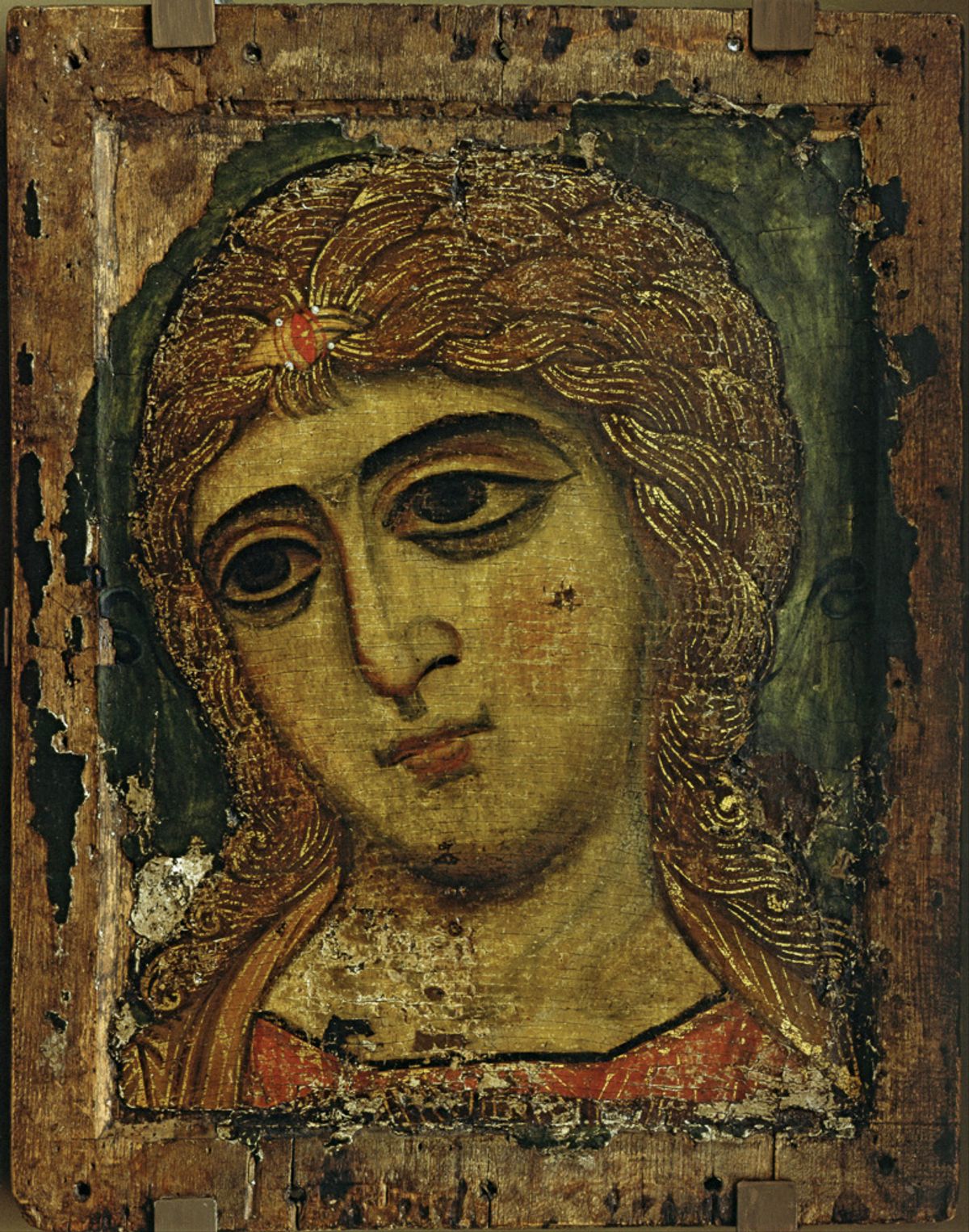Vladimir Gusev, the director of the State Russian Museum, has denied accusations that he is under pressure from a prominent businessman to move a prize exhibit, the 12th-century Archangel with the Golden Hair, which experts say would threaten the fragile icon. At a press conference in the museum last month, Gusev said: “There were not and are not any demands to… remove the icon under threat of firing the director, no secret work under pressure of the ministry [of culture].”
In early October, curators at the museum appealed to the St Petersburg prosecutor’s office to investigate the “criminal expropriation” of the artefact. The Art Newspaper has seen a letter of 18 September from Yuri Yevtiukhin, a director at the Russian culture ministry, asking the museum to transfer the icon to a church at Mikhailovsky Castle. The request was on behalf of the charitable foundation of the construction mogul Sergei Shmakov. He hit headlines last year for offering Vladimir Putin an apartment with the wish that he “rule for 1,000 years” (it was donated, at the president’s behest, to an underprivileged family).
The curators say that the Russian culture minister, Vladimir Medinsky, came to see the icon in late September and sent deputies for other visits, while Gusev expressed fears for his job to the museum’s department heads on 5 October. They argue that the castle, a branch of the museum, lacks the security or climate control to house the icon, and that the 4m rubles ($70,000) offered by Shmakov’s foundation for the church’s restoration is woefully inadequate. According to the art historian who led the campaign, Irina Shalina, 40m to 60m rubles is needed for a technical study of the space alone.
The Russian culture ministry has since stepped in to provide an appropriate sum to restore the church fully, Shalina says. Meanwhile, public funds for important and, in some cases, critical restoration projects in St Petersburg, Vyborg, Novgorod and the Pskov region were abruptly pulled in October.
The icon’s state of conservation is less secure. It travelled to New York in 1997 for the Metropolitan Museum of Art’s Glory of Byzantium exhibition. But moving it even a short distance now risks the “rapid destruction” of the object’s “very worn layer of prime coat” and “extremely thin paint layer with large losses”, the curators warn in their letter to the prosecutor. The foundation’s initial proposal was to transport the icon back and forth regularly for church services.
Shalina fears a repeat of the loss of the 14th-century icon of the Virgin Mary with the baby Jesus, known as the Toropets Virgin Mary, which the museum lent to a church in one of Shmakov’s housing developments in 2009. She says that the icon has been removed from the museum’s records and transferred to those of the Grabar Center for Art Conservation, while remaining in Shmakov’s church. Gusev, however, claims that he is requesting the icon’s return.
“Imagine a French millionaire declaring to the president of the French Republic that he thinks the Mona Lisa needs to be brought periodically to a small church attached to the Louvre that he would restore,” Shalina says. “On what grounds does a private individual dictate that a masterpiece be moved to a space that is less worthy and absolutely unfit?”


